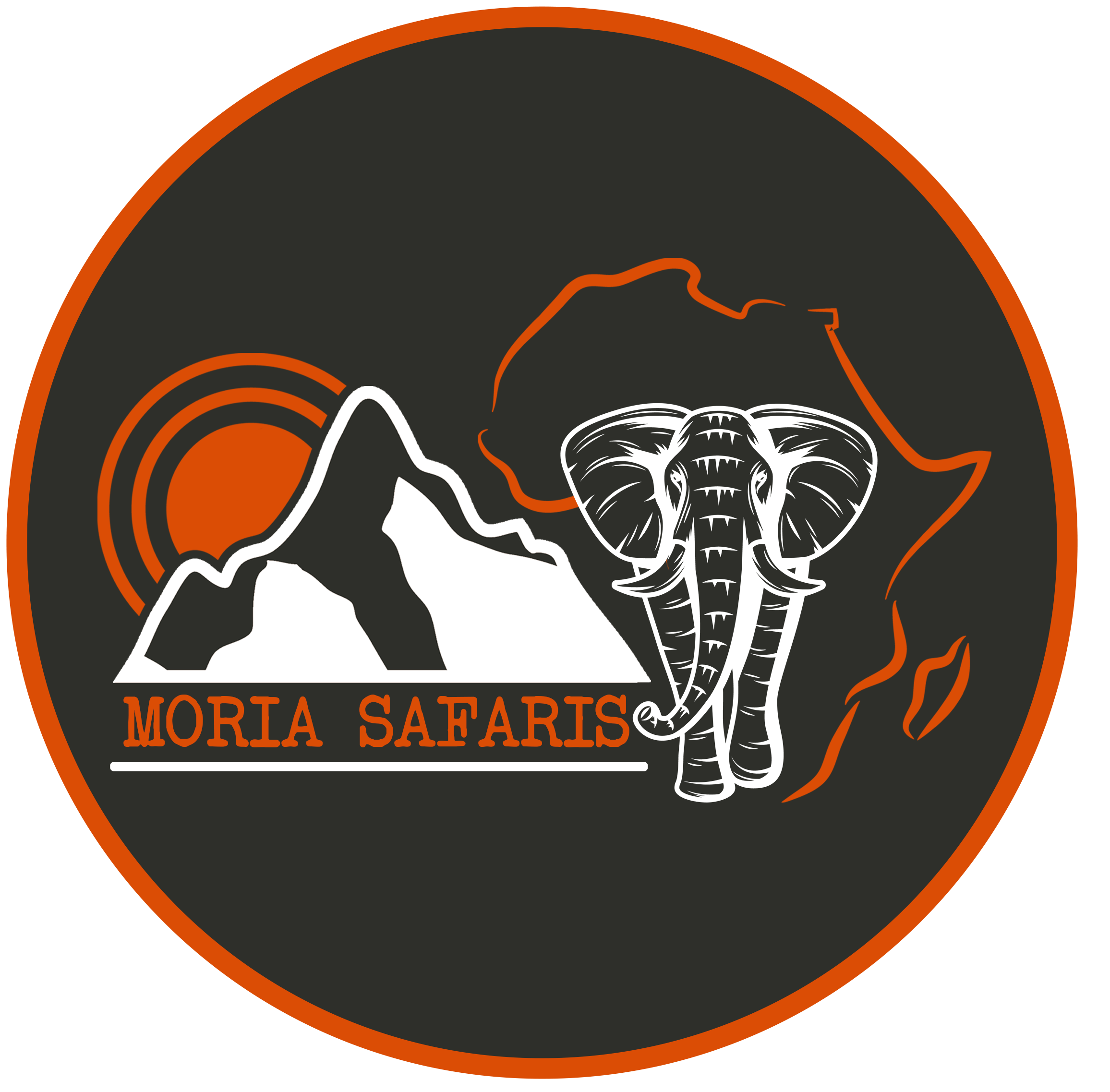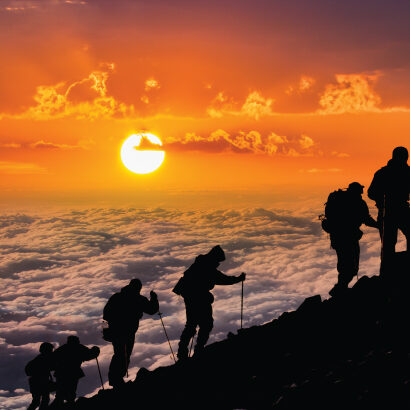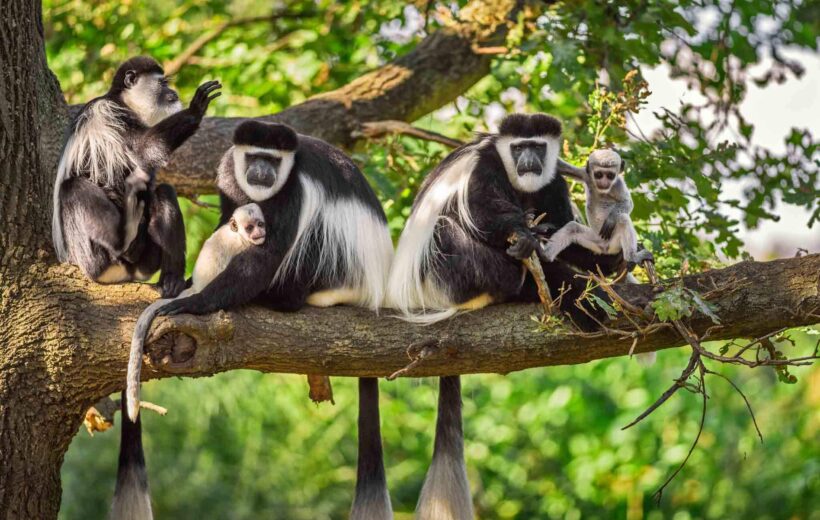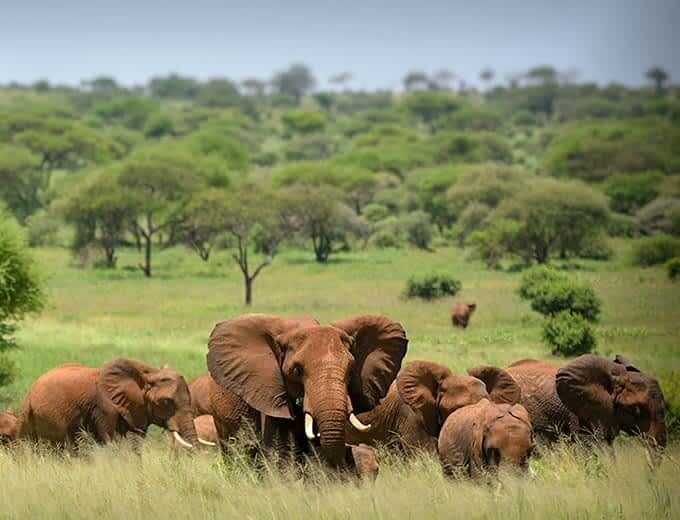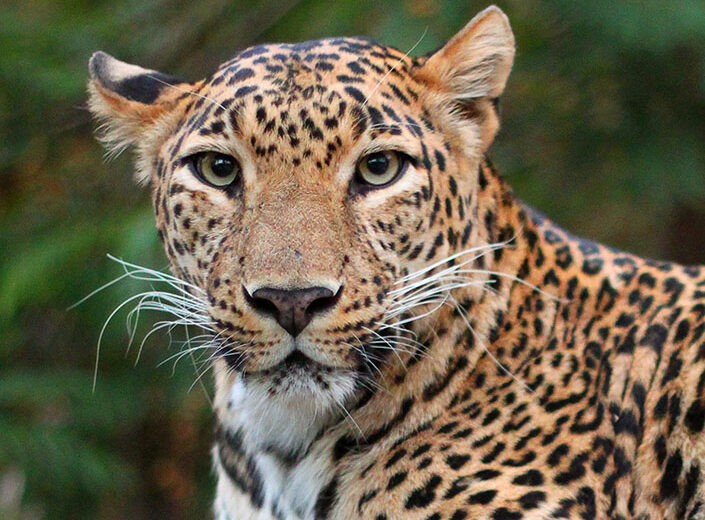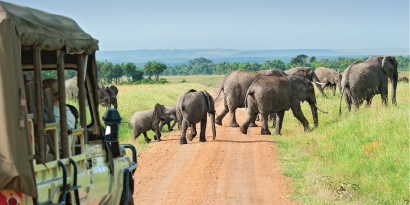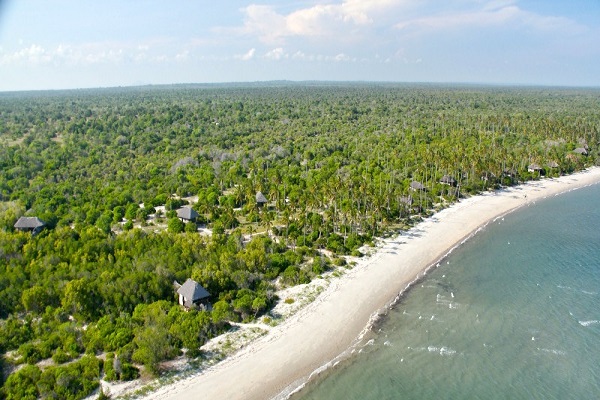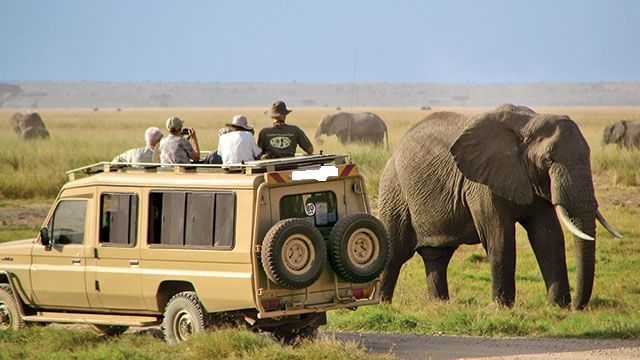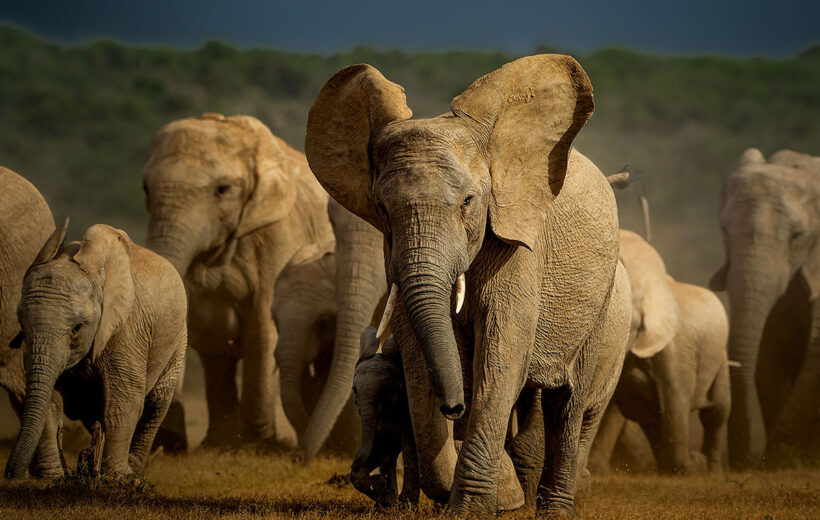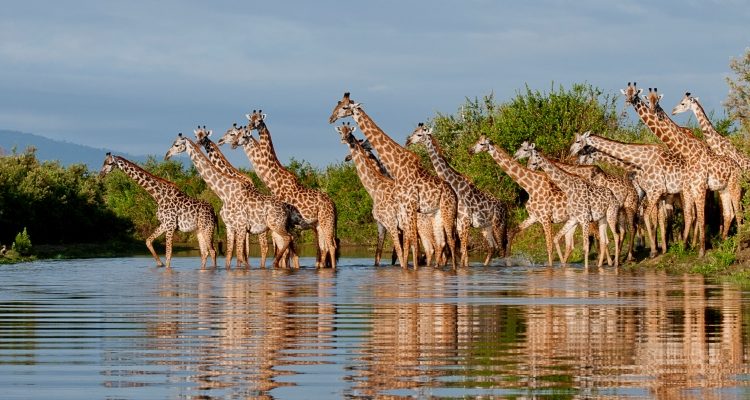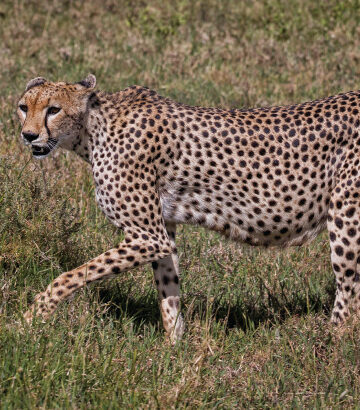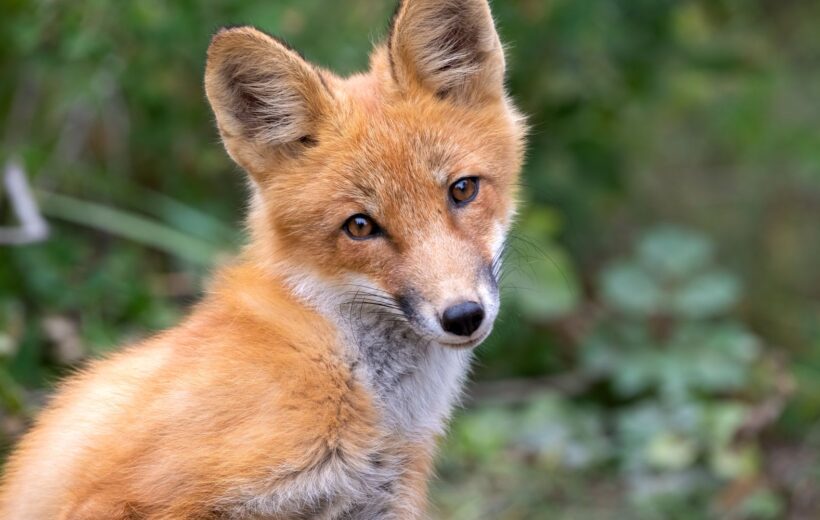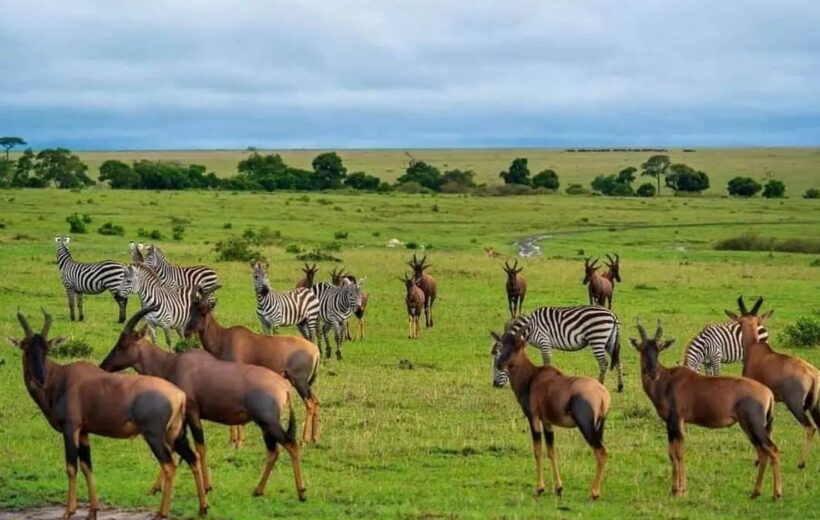Ngorongoro Crater
Ngorongoro Crater
The Ngorongoro Crater, often referred to as the "Eighth Wonder of the World," is a natural marvel located in northern Tanzania, East Africa. This stunning geological formation is part of the Ngorongoro Conservation Area, a UNESCO World Heritage Site, and a crucial component of the larger Serengeti ecosystem. The Ngorongoro Conservation Area encompasses not only the crater itself but also the surrounding highlands, plains, and diverse habitats that support a wide variety of wildlife.

Key features of Ngorongoro Crater
-
-
The best time to visit the Ngorongoro Crater in Tanzania largely depends on your preferences and what you hope to experience during your trip. The Ngorongoro Conservation Area offers something unique throughout the year, so here's a breakdown of the different seasons:
- Dry Season (June to October):
- This is considered the peak tourist season due to the dry weather, making it easier to spot wildlife as they gather around water sources.
- Clear skies and sunshine provide excellent visibility, ideal for photography and wildlife viewing.
- The cooler temperatures during the day make for comfortable safari experiences.
- Expect larger crowds and higher accommodation prices, so it's advisable to book well in advance.
- Green Season (November to May):
- This period covers the wet or "green" season in Ngorongoro.
- The landscape is lush and green, with wildflowers in full bloom, creating a beautiful backdrop for photography.
- Birdwatchers will find this time particularly rewarding, as many migratory bird species are present.
- Fewer tourists mean a quieter and more exclusive experience.
- Accommodation prices may be lower, and it's easier to secure bookings.
- The downside is that some roads can become impassable due to heavy rains, and wildlife may be more dispersed since water is readily available throughout the park.
- Calving Season (January to February):
- If you're interested in witnessing the Great Migration of wildebeests and zebras, this is a fantastic time to visit the southern Serengeti plains, which are part of the Ngorongoro Conservation Area.
- Thousands of wildebeest calves are born during this period, attracting predators like lions and cheetahs.
- Keep in mind that while this is a unique and exciting time for wildlife enthusiasts, accommodations can be in high demand.
Ultimately, the best time to visit the Ngorongoro Crater depends on your preferences and what you hope to experience. If you prefer fewer crowds and lush green landscapes, the green season might be more appealing. On the other hand, if you're focused on game viewing and photography, the dry season is the optimal choice. Regardless of when you choose to visit, the Ngorongoro Crater is a remarkable destination for wildlife enthusiasts and nature lovers alike.
- Dry Season (June to October):
-
Best Time to Visit
- Overview
- Things To Do
- Fact to Know
- Birdwatching
- Cultural Experiences
- Avoiding Crowds
- Accommodation
- How To Get There
The best time to visit Ruaha National Park in Tanzania depends on your interests and what you hope to experience during your safari. Here are the primary considerations for the best times to visit Ruaha National Park:
-
Dry Season (June to October):
- June to October is considered the prime safari season in Ruaha. During this period, the weather is generally dry, and the vegetation is less dense. The cooler and drier conditions make it an excellent time for wildlife viewing.
- The concentration of wildlife around water sources, such as the Great Ruaha River, makes animal sightings more predictable and frequent.
-
Wildlife Viewing:
- If you’re primarily interested in wildlife viewing, the dry season offers the best opportunities. The reduced vegetation makes it easier to spot animals, and the chance of witnessing predator-prey interactions is higher.
-
Birdwatching:
- Ruaha National Park is a superb birdwatching destination. Bird enthusiasts may prefer the wet season (November to April) when migratory bird species arrive, but birdwatching is rewarding year-round.
-
Scenery and Landscape:
- The park undergoes a dramatic transformation during the wet season (November to April). Lush green landscapes, wildflowers in bloom, and vibrant scenery can be more appealing to photographers and those who appreciate the beauty of the rainy season.
-
Fewer Crowds:
- The park is less crowded during the wet season, making it a preferred choice for those seeking a quieter and more exclusive safari experience.
-
River Activities:
- If you’re interested in river activities like boat safaris, the best time is during the dry season when water levels are lower and the river is more navigable.
-
Fishing:
- Fishing enthusiasts may prefer the dry season when river and lake water levels are lower, making it easier to catch certain fish species.
-
Night Sky Viewing:
- The dry season offers clearer night skies for stargazing and astrophotography due to reduced cloud cover.
Ultimately, the best time to visit Ruaha National Park depends on your specific interests. Whether you prioritize wildlife viewing, birdwatching, the unique landscapes of each season, or a quieter safari experience, planning your visit accordingly will help you make the most of your time in this remarkable and less-visited national park in Tanzania.
The Ngorongoro Crater in Tanzania is a unique and stunning natural wonder that offers various activities and experiences for visitors. Here are some things to do while exploring the Ngorongoro Crater:
-
Game Drives:
- Embark on thrilling game drives within the crater. The Ngorongoro Conservation Area is home to a diverse array of wildlife, including the Big Five (lion, leopard, elephant, buffalo, and rhinoceros). Explore the crater’s floor to spot these magnificent creatures and other wildlife in their natural habitat.
-
Sightseeing and Scenic Views:
- Enjoy breathtaking vistas and panoramic views from the crater rim. The landscape is awe-inspiring, offering expansive views of the crater floor, the surrounding savannah, and the alkaline Lake Magadi at the center.
-
Birdwatching:
- The crater is a haven for bird enthusiasts, boasting a rich birdlife with over 400 bird species. Keep an eye out for flamingos, ostriches, eagles, vultures, and a myriad of other avian species.
-
Cultural Visits:
- Explore the Maasai villages and cultural bomas located around the Ngorongoro Conservation Area. Engage in cultural interactions, learn about Maasai traditions, and gain insights into their way of life and pastoralist culture.
-
Picnics and Relaxation:
- Take advantage of designated picnic areas within the crater to enjoy a meal amidst nature’s splendor. Relax, unwind, and appreciate the stunning surroundings.
-
Hiking and Walking Trails:
- Some areas outside the crater offer guided walking safaris or short hikes, allowing visitors to explore the highland forests, visit waterfalls, and appreciate the diverse ecosystems surrounding the crater.
-
Conservation Education:
- Learn about the conservation efforts and the unique geological history of the crater by visiting the Olduvai Gorge Museum, which is nearby and showcases significant archaeological discoveries.
-
Photography Opportunities:
- Capture the diverse landscapes, abundant wildlife, and stunning natural beauty of the crater. The breathtaking scenery and wildlife encounters provide excellent opportunities for photography.
Remember that visiting the Ngorongoro Crater involves respecting park regulations, wildlife, and the environment. Engaging in these activities offers a chance to immerse oneself in nature’s beauty and experience the rich biodiversity that thrives within this natural wonder
YOU SHOULD KNOW THESE FACTS ABOUT TANZANIA’S NGORONGORO CRATER
- The Ngorongoro Crater took shape approximately 2.5 million years ago, following a colossal volcanic eruption that led to the implosion of an active volcano’s cone. The striking, unbroken caldera that we observe today is the primary remnant of this dramatic event.
- Caldera, a Spanish term for ‘cauldron,’ refers to a bowl-shaped volcanic depression typically exceeding one kilometer (0.6 miles) in diameter, featuring steep slopes along its outer edge. Calderas typically form when the summit of a volcanic cone or a group of cones collapses due to a lack of support from underlying magma.After major eruptions subside, the summit of the volcanic mountain vanishes, leaving behind an enormous void. Subsequent minor eruptions can create smaller cones within the caldera’s floor, which may later fill with water to form lakes.
- The Ngorongoro Crater stands out not only as the largest unbroken volcanic caldera on Earth but also as a natural haven for some of Africa’s most densely populated large mammals. Its enclosed nature has given rise to a unique ecosystem within the crater.
- The Ngorongoro Crater is estimated to be between two and three million years old.
- The Ngorongoro Crater is celebrated for its geological magnificence and the astonishing variety of fauna and flora it houses within a relatively compact area. Visitors are virtually guaranteed to encounter high concentrations of wildlife during a game drive within the crater. Moreover, the Ngorongoro Crater provides some of the most reliable opportunities to spot the Big 5 (elephant, buffalo, rhino, lion, and leopard) in East Africa.
- In the Maasai language, the word “Ngorongoro” is believed to be onomatopoeic, representing the sound of the bell attached to the lead cow’s neck in a herd. The ringing bell creates an echoing “ngor ngor” sound, which inspired the local Maasai pastoralists to name the area Ngorongoro.
- The best time to visit the Ngorongoro Crater depends less on optimizing wildlife sightings, as the wildlife remains within the crater year-round, and more on your preference for crowds and weather conditions. The dry season, spanning from June to October, offers cooler temperatures and excellent animal sightings as wildlife congregates near watering holes. However, it’s also the peak tourist season, leading to larger crowds. Tanzania experiences two rainy seasons from April to May and November to December, characterized by warm temperatures and muddy roads. Yet, these wet seasons attract fewer visitors, and the Ngorongoro Crater transforms into a lush, emerald “Garden of Eden.”
Flora and Fauna in Ngorongoro Crater
The Ngorongoro Crater is a haven for diverse and abundant flora and fauna, making it a remarkable ecosystem with a rich tapestry of life. Here’s a closer look at the remarkable flora and fauna found within this natural wonder:
Flora in Ngorongoro Crater:
- Grasses: The crater’s fertile soils support a variety of grass species, including red oat grass, love grass, and star grass, which serve as essential food sources for herbivores.
- Acacia Trees: Savannah woodlands in the Ngorongoro Crater are dotted with acacia trees, such as the yellow fever tree and umbrella thorn acacia. These trees provide shade for animals and sustenance for giraffes and elephants.
- Euphorbia Plants: These succulent plants are found in the crater’s arid regions and are adapted to the harsh conditions. Some species are toxic, serving as a natural defense mechanism.
- Fever Trees: These strikingly yellow trees are a prominent feature in the Ngorongoro Crater’s landscape. They often grow near water sources and are frequented by wildlife.
- Wildflowers: During the green season, the crater comes alive with a colorful display of wildflowers, including the crimson star, purple balsam, and yellow daisy, attracting pollinators like butterflies and bees
Fauna in Ngorongoro Crater:
- The Big Five: The Ngorongoro Crater is famous for hosting all members of the Big Five, which include African elephants, lions, leopards, African buffalo, and the critically endangered black rhinoceros.
- African Predators: In addition to the Big Five, the crater is home to a variety of predators, including cheetahs, spotted hyenas, and servals. It’s an excellent place to witness the dramatic predator-prey interactions.
- Herbivores: The crater boasts a thriving population of herbivores, such as wildebeests, zebras, Thomson’s gazelles, Grant’s gazelles, elands, and hippos. These animals are attracted to the lush grasslands and water sources.
- Birdlife: The Ngorongoro Crater is a birdwatcher’s paradise with over 400 species of birds. Notable avian residents include flamingos, ostriches, eagles, and secretary birds.
- Reptiles: The crater is also inhabited by various reptiles, including Nile crocodiles, agama lizards, and African rock pythons, adding to its ecological diversity.
- Primates: Though not as common as other species, the crater is home to olive baboons and vervet monkeys. They can often be seen foraging for food and socializing in small troops.
- Hippos: The Ngorongoro Crater is home to one of the densest populations of hippos in Africa. They spend their days in the cool waters of Lake Magadi and venture out at night to graze on grass.
- Insects: A multitude of insects, from butterflies to dung beetles, play essential roles in the ecosystem, contributing to pollination, decomposition, and nutrient cycling.
The Ngorongoro Crater’s unique geological features and abundant resources create an ecosystem where this diverse flora and fauna thrive. Visitors to the crater are treated to an unparalleled wildlife spectacle and the opportunity to witness the intricate interplay between species in this natural wonder of East Africa.
Fauna in Ngorongoro Crater:
- The Big Five: The Ngorongoro Crater is famous for hosting all members of the Big Five, which include African elephants, lions, leopards, African buffalo, and the critically endangered black rhinoceros.
- African Predators: In addition to the Big Five, the crater is home to a variety of predators, including cheetahs, spotted hyenas, and servals. It’s an excellent place to witness the dramatic predator-prey interactions.
- Herbivores: The crater boasts a thriving population of herbivores, such as wildebeests, zebras, Thomson’s gazelles, Grant’s gazelles, elands, and hippos. These animals are attracted to the lush grasslands and water sources.
- Birdlife: The Ngorongoro Crater is a birdwatcher’s paradise with over 400 species of birds. Notable avian residents include flamingos, ostriches, eagles, and secretary birds.
- Reptiles: The crater is also inhabited by various reptiles, including Nile crocodiles, agama lizards, and African rock pythons, adding to its ecological diversity.
- Primates: Though not as common as other species, the crater is home to olive baboons and vervet monkeys. They can often be seen foraging for food and socializing in small troops.
- Hippos: The Ngorongoro Crater is home to one of the densest populations of hippos in Africa. They spend their days in the cool waters of Lake Magadi and venture out at night to graze on grass.
- Insects: A multitude of insects, from butterflies to dung beetles, play essential roles in the ecosystem, contributing to pollination, decomposition, and nutrient cycling.
The Ngorongoro Crater’s unique geological features and abundant resources create an ecosystem where this diverse flora and fauna thrive. Visitors to the crater are treated to an unparalleled wildlife spectacle and the opportunity to witness the intricate interplay between species in this natural wonder of East Africa.
Fauna in Ngorongoro Crater:
- The Big Five: The Ngorongoro Crater is famous for hosting all members of the Big Five, which include African elephants, lions, leopards, African buffalo, and the critically endangered black rhinoceros.
- African Predators: In addition to the Big Five, the crater is home to a variety of predators, including cheetahs, spotted hyenas, and servals. It’s an excellent place to witness the dramatic predator-prey interactions.
- Herbivores: The crater boasts a thriving population of herbivores, such as wildebeests, zebras, Thomson’s gazelles, Grant’s gazelles, elands, and hippos. These animals are attracted to the lush grasslands and water sources.
- Birdlife: The Ngorongoro Crater is a birdwatcher’s paradise with over 400 species of birds. Notable avian residents include flamingos, ostriches, eagles, and secretary birds.
- Reptiles: The crater is also inhabited by various reptiles, including Nile crocodiles, agama lizards, and African rock pythons, adding to its ecological diversity.
- Primates: Though not as common as other species, the crater is home to olive baboons and vervet monkeys. They can often be seen foraging for food and socializing in small troops.
- Hippos: The Ngorongoro Crater is home to one of the densest populations of hippos in Africa. They spend their days in the cool waters of Lake Magadi and venture out at night to graze on grass.
- Insects: A multitude of insects, from butterflies to dung beetles, play essential roles in the ecosystem, contributing to pollination, decomposition, and nutrient cycling.
The Ngorongoro Crater’s unique geological features and abundant resources create an ecosystem where this diverse flora and fauna thrive. Visitors to the crater are treated to an unparalleled wildlife spectacle and the opportunity to witness the intricate interplay between species in this natural wonder of East Africa.
-
Birdwatching in the Ngorongoro Crater offers an incredible opportunity to observe a diverse array of avian species against the backdrop of stunning landscapes and rich biodiversity. Here’s a glimpse into birdwatching in the Ngorongoro Crater:
-
Bird Species Diversity:
- The crater is a haven for bird enthusiasts, boasting a remarkable diversity of bird species. Over 400 bird species have been recorded within the Ngorongoro Conservation Area, including both resident and migratory birds.
-
Scenic Beauty and Habitats:
- The crater’s varied habitats, including grasslands, woodlands, swamps, and the alkaline Lake Magadi, attract a wide range of birdlife. The picturesque setting provides an ideal environment for birdwatching against a backdrop of stunning scenery.
-
Bird Species Highlights:
- Spotting various bird species is a highlight for birdwatchers in the Ngorongoro Crater. Look out for flamingos, pelicans, ostriches, eagles, vultures, storks, herons, bustards, and numerous other bird species that thrive in the diverse habitats.
-
Seasonal Variations:
- Birdwatching experiences can vary seasonally due to the presence of migratory birds. The crater attracts migratory species during certain periods, adding to the bird diversity, especially around the lake areas.
-
Best Times for Birdwatching:
- Early mornings and late afternoons are often the best times for birdwatching when bird activity is high. The calm and cooler periods of the day provide optimal conditions for observing and photographing birds.
-
Guided Birdwatching Tours:
- Joining guided birdwatching tours or hiring experienced local guides knowledgeable about bird species and their habitats can enhance the birdwatching experience. Guides can help in identifying and locating bird species and provide valuable insights into their behavior.
-
Binoculars and Photography:
- Bring binoculars or a spotting scope for a closer view of birds, especially those perched at a distance. Photography enthusiasts can capture stunning images of various bird species against the scenic backdrop of the crater.
-
Conservation and Protection:
- Respect wildlife and bird habitats by adhering to park regulations and practicing responsible birdwatching. Maintain a safe distance from nesting sites and refrain from disturbing the birds or their natural habitats.
Birdwatching in the Ngorongoro Crater offers an immersive and rewarding experience for nature enthusiasts and bird lovers. The diverse birdlife and picturesque landscapes make it a captivating destination for observing and appreciating the avian wonders of Tanzania’s wildlife
-
The Ngorongoro Conservation Area, including the Ngorongoro Crater, offers unique cultural experiences that allow visitors to engage with the indigenous Maasai people and gain insights into their traditional lifestyle and cultural heritage. Here are some cultural experiences available in the Ngorongoro Crater:
-
Maasai Village Visits:
- Take part in guided visits to Maasai villages located within the Ngorongoro Conservation Area. These visits offer opportunities to interact with Maasai families, learn about their customs, and witness daily activities such as milking cattle, traditional dances, and rituals.
-
Cultural Boma Tours:
- Experience a glimpse of traditional Maasai life by visiting cultural bomas, which are fenced enclosures where Maasai families reside. Engage in cultural exchanges, observe traditional dwellings (“Manyattas”), and learn about their pastoralist lifestyle and customs.
-
Cultural Performances:
- Witness captivating cultural performances that showcase Maasai dances, songs, and rituals. The Maasai people often perform their traditional dances adorned in colorful attire, allowing visitors to appreciate their vibrant cultural heritage.
-
Cattle Herding and Grazing:
- Join Maasai warriors (Morans) in their daily activities, such as cattle herding and grazing. Learn about the significance of cattle in Maasai culture, which holds deep cultural, economic, and symbolic value.
-
Craft Demonstrations and Shopping:
- Engage in craft demonstrations where Maasai artisans showcase traditional beadwork, jewelry-making, and crafts. Visitors can purchase authentic Maasai handicrafts, beadwork, and souvenirs directly from local artisans.
-
Cultural Interpretation and Education:
- Local guides or Maasai hosts often provide cultural interpretations, sharing stories, myths, and historical knowledge about the Maasai people’s traditions, beliefs, and way of life.
-
Homestay Experiences:
- Some programs offer homestay experiences, allowing visitors to stay with Maasai families, participate in daily chores, and gain an immersive understanding of Maasai culture and hospitality.
These cultural experiences provide a window into the rich and ancient heritage of the Maasai people, offering visitors a chance to appreciate their customs, traditions, and strong connections to the land within the Ngorongoro Conservation Area. It’s essential to approach these experiences with respect, cultural sensitivity, and a willingness to learn and engage with the local community.
Avoiding crowds in popular tourist destinations like the Ngorongoro Crater can enhance your experience by allowing for more intimate wildlife encounters and a deeper connection with the surroundings. Here are some tips to avoid crowds while visiting the Ngorongoro Crater:
-
Visit During Off-Peak Seasons:
- Consider visiting during the shoulder or off-peak seasons, typically outside major holiday periods and the high tourist season. This may vary but generally includes the months outside of June to September.
-
Early Morning or Late Afternoon Visits:
- Arrive at the Ngorongoro Crater during early morning hours or late in the afternoon. Wildlife tends to be more active during these times, and there are fewer visitors compared to midday.
-
Choose Less Popular Times of the Week:
- Weekdays often see fewer visitors than weekends. Plan your visit on weekdays if your schedule allows for flexibility.
-
Private Tours or Safari Guides:
- Consider hiring a private tour guide or joining a smaller, more exclusive tour group. Private tours allow for personalized itineraries and may offer flexibility in scheduling your visits to avoid peak times.
-
Alternative Routes and Access Points:
- Explore less-traveled routes within the crater or seek access points away from the main entrances. This may offer quieter spots for wildlife viewing and fewer crowds.
-
Stay Inside the Conservation Area:
- Consider staying at accommodations inside the Ngorongoro Conservation Area. Some lodges or camps offer early access to the crater for their guests, allowing for quieter visits.
-
Plan and Reserve in Advance:
- Plan your visit and book accommodations, permits, and tours in advance. This ensures you have secured spots and avoids the last-minute rush.
-
Respect Wildlife Viewing Etiquette:
- Keep a respectful distance from wildlife, avoid making loud noises, and adhere to park guidelines. This not only ensures your safety but also minimizes disturbance to the animals and their natural behavior.
-
Exploration Beyond the Crater:
- Explore other areas within the Ngorongoro Conservation Area, such as the highlands, forests, or cultural villages, to diversify your experiences and encounter fewer crowds.
-
Be Flexible and Patient:
- Sometimes, even with planning, unexpected situations may arise. Being flexible and patient can help adjust your schedule to find quieter moments for wildlife viewing and exploration.
By incorporating these strategies, visitors can optimize their experience in the Ngorongoro Crater, finding quieter times and spaces to appreciate the incredible wildlife and natural beauty while avoiding larger crowds
Accommodations in the Ngorongoro Crater region cater to various preferences and budgets, offering a range of options from luxury lodges to tented camps and more. Here are some types of accommodations available in and around the Ngorongoro Crater:
-
Luxury Lodges:
- Exclusive lodges situated on the crater rim or within the Ngorongoro Conservation Area offer luxurious amenities, spacious rooms, fine dining, and panoramic views of the crater. These lodges often provide guided safaris and other activities.
-
Tented Camps:
- Tented camps offer a blend of luxury and immersion in nature. These camps provide comfortable accommodations in safari-style tents with en-suite facilities, allowing guests to experience the wilderness up close.
-
Mid-Range Lodges and Camps:
- There are mid-range accommodations providing comfortable rooms or tents with essential amenities and personalized services. These options offer a balance between comfort and affordability.
-
Campsites:
- For those seeking a more adventurous experience, campsites within the Ngorongoro Conservation Area provide basic facilities. Camping offers a close-to-nature experience with scenic views and the chance to hear wildlife sounds at night.
-
Private Villas or Houses:
- Some accommodations offer private villas or houses suitable for families or larger groups. These villas often come with exclusive services, private dining, and personalized experiences.
-
Cultural Lodges:
- Certain accommodations focus on providing cultural experiences, offering opportunities to interact with local communities or Maasai villages while enjoying comfortable lodging.
-
Inside vs. Outside the Conservation Area:
- Accommodations located within the Ngorongoro Conservation Area offer easier access to the crater but tend to be more exclusive and can be more expensive. Lodges situated outside the area might require longer drives but can offer more affordable options.
When choosing accommodations in the Ngorongoro Crater region, consider factors such as location, amenities, budget, services, and the overall experience you seek. It’s advisable to book accommodations well in advance, especially during peak tourist seasons, to secure preferred options and dates for your visit. Additionally, some accommodations offer guided tours, game drives, and cultural experiences as part of their packages, enhancing your overall stay in this breathtaking area
Reaching the Ngorongoro Crater involves several transportation options, considering its location within the Ngorongoro Conservation Area in Tanzania. Here’s how to get to the Ngorongoro Crater:
-
By Air:
- Fly to Kilimanjaro International Airport (JRO) or Arusha Airport (ARK) in Tanzania, which are major airports serving the region. From there, you can arrange domestic flights to the Lake Manyara Airstrip or the closer Arusha Airport.
-
By Road:
- Most visitors access the Ngorongoro Crater by road from nearby towns or cities. Arusha is a common starting point for many safaris and tours to the crater. The journey by road from Arusha to the Ngorongoro Crater takes approximately 3-4 hours, depending on road conditions.
-
Tour Operators and Safari Companies:
- Organized safaris, tours, and travel packages often include transportation to the Ngorongoro Crater. Many tour operators and safari companies offer transportation services from Arusha or other nearby towns. They provide guided tours and arrange transportation in 4×4 safari vehicles.
-
Private Vehicles or Rentals:
- Some travelers opt for self-drive options using rental cars or private vehicles. However, it’s important to note that certain areas within the conservation area might require 4-wheel drive vehicles, and it’s advisable to hire a local guide for navigation and safety.
-
Park Entrance Gates:
- Access to the Ngorongoro Conservation Area and the crater involves passing through designated park entrance gates. Visitors need to pay conservation fees and obtain permits at the gate before entering.
-
Guided Tours and Transfers:
- Many accommodations within the area offer transfers or guided tours to the crater for their guests. Visitors can arrange transport directly with their lodging or through local tour operators.
It’s recommended to plan transportation arrangements in advance, especially if you’re not part of an organized tour. Additionally, road conditions may vary, particularly during the rainy season, so it’s advisable to check the latest travel updates and conditions before embarking on the journey to the Ngorongoro Crater
